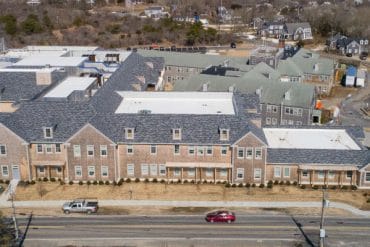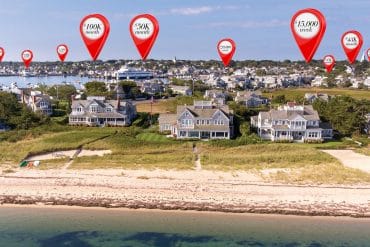How Craig Venter is improving the world one genome at a time.
Simply put, Craig Venter is on the verge of changing the world. His discoveries will alter the future of mankind by defeating major diseases and extending human life. In the annals of scientific history, Craig Venter has added some of the most monumental discoveries. He was the first to ever sequence the human genome. He was the first to create “synthetic life.” He circumnavigated the globe in his sailboat Sorcerer and discovered more new species than anyone else in history. He received the National Medal of Science from President Obama and was named one of the most influential people in the world by Time magazine. N Magazine spoke with Craig Venter prior to his presentation at this year’s Nantucket Project about the profound implications of his work.
 N MAGAZINE: What was the response when you started your human genome project?
N MAGAZINE: What was the response when you started your human genome project?
CRAIG VENTER: My team sequenced the first genome in history twenty years ago this June. I was at the National Institutes of Health (NIH), but left out of frustration that they were going too slow. We applied for a grant to the NIH for the idea to do it, but they turned us down, saying that it was impossible. Then we used that same technique five years later to sequence the human genome. It was met with extreme ridicule, and rudeness, and personal attacks — not the things you’d normally expect from the elite scientific community. I was challenging something that they had a $5 billion budget for. The idea that I developed with my team turned out quite well. We ended up [sequencing the human genome] for $100 million in nine months, instead of in fifteen years for $5 billion. If I failed, it would have been a very dramatic failure with the world watching. It was on the front page of newspapers everyday for about two years. But I was sure intuitively that it would work and I hired the best people in the world to make sure it did.
N MAGAZINE: What’s the business model for your genomic work today?
CRAIG VENTER: The business model today is a very different one. Instead of doing one genome for $100 million, we are setting up to do millions of genomes for about $1,000 each. The business model is somewhat similar in the end to building a massive database that the world would use as a reference — everybody from individuals, to physicians, to hospitals, insurance companies, major pharmaceutical companies, to children’s hospitals. Nobody knows how to interpret this data. We’re doing it millions of times over so that we have a massive data set of humanity and so that we can catalogue and categorize the differences.
N MAGAZINE: What are the practical applications?
CRAIG VENTER: Children’s Hospital in San Diego brought us a rare, undiagnosed disease of an eleven-year-old child with tumors on his body and MRIs showing massive brain malformations. They characterized it as a syndrome of which there are about thirty other cases of in the world. Nobody knew anything about it. In two weeks, we sequenced his entire genome, plus both of his parents’. Now we know exactly which genes are involved, genes that explain the condition. So instead of having what would have been a ten or twenty-year program of trying to look at families with these diseases, we can just solve it in a couple-week period.
N MAGAZINE: What impact does this research have on more common diseases such as cancer?
CRAIG VENTER: Cancer is one of the places where we can affect things immediately. Human Longevity Inc. [Venter’s latest genomic venture he launched in 2014] has the most comprehensive cancer program in the world. We sequence the entire genome of the individual. Nobody has ever had this comprehensive level of information in a two week period on a patient that tells you what to do and what not to do. This is the new paradigm in cancer. Just from reading the genome, understanding the changes, we can make a specific vaccine for that patient for that tumor.
N MAGAZINE: Are we near a point where a healthy individual can have their immune system analyzed as a preventative measure?
CRAIG VENTER: There’s a finite number of places doing it now; it will get more commonplace. If you know somebody that has cancer and they have not had any genome analysis of their tumor, they should get it. We’re developing a whole new program that is ten times cheaper than what is out there now, because it does need to be widespread and available to people.
N MAGAZINE: What’s your goal when it comes to human longevity?
CRAIG VENTER: Our goal is to try to increase healthy lifespan, quality of life and change healthcare to a preventative medicine paradigm. When that happens there is a lifespan extension for sure. I’m not trying to make people live to 150 or 160 years, but it would be nice to live to a hundred and be happy and healthy and active.
N MAGAZINE: How is that being done?
CRAIG VENTER: We’re dealing with human disease across the board. We’re dealing with the entire genome. We’re the only specialty that looks at the entire person, as opposed to just their heart, just their brain. We’re trying to find early diagnostic measures for every type of disease. If you’re between fifty and seventy-five, you have a 30 percent chance of dying this year. Of that 30 percent, you have another 30 percent chance of dying of cancer, another 30 percent of dying of heart disease, and the last third is a combination of all the others, including dementia. If we can find parameters with early detection of cancer, prevention of cancer, early measures with heart dis- ease, that affects a large percentage of the population right there.
N MAGAZINE: If you look twenty years out, do you see an entirely new frontier in the management of human health?
CRAIG VENTER: That’s what we’re trying to help create. Right now it’s a symptomology driven system with very crude solutions. So we’re trying to get very precise data on what’s truly wrong at the molecular level. We’re going to be sequencing genomes of kids at birth, trying to predict the likelihood of them surviving the first five years, which is the most critical period, and then what their risks are for the long term. So the future generations will have a chance at having this information from the beginning, instead of going to their physicians and being treated as this giant black box that nobody really knows.
 N MAGAZINE: If one of our readers wants to explore what’s going on inside their body, what do they do?
N MAGAZINE: If one of our readers wants to explore what’s going on inside their body, what do they do?
CRAIG VENTER: Human Longevity, Inc. is opening our first Health Nucleolus in September in San Diego and it is going to be the most comprehensive physical anybody can get. We measure the entire genome. We measure the entire microbiome. We measure 24,000 chemicals in the blood stream. We do the quantitative brain imaging and the quantitative whole body MRI imaging. And then we integrate that information and give it back to you in a report. It’s like a supercharged executive physical. We’re trying to set it up where that happens in a day. We plan to open other clinics based on this first one. It’s a different way of looking at medicine because part of what we can do with the genome is predict the future.
N MAGAZINE: What would it cost?
CRAIG VENTER: We’re starting out charging $25,000 for the entire process.
N MAGAZINE: Where do you place yourself in the pantheon of medical researchers?
CRAIG VENTER: I’ve been lucky in putting together some of the best teams in the history of science. Genomics is a team sport. I have some bright lines in history, having done the first genome in history. I think characterizing the first human genome is a benchmark of historical significance. But I’d rather be known for what we are trying to do now — actually taking the genome and changing people’s lives with it — versus it just being this historic scientific first.






